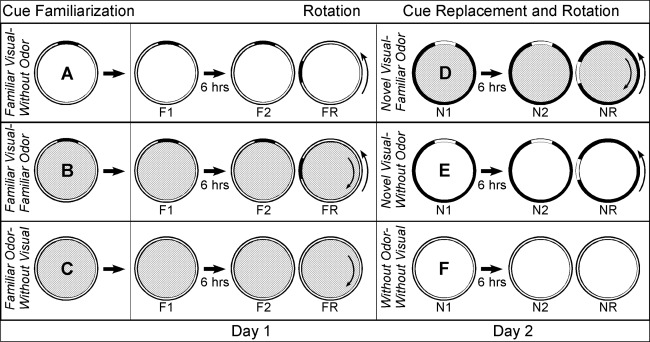Figure 1.

The interplay of visual and olfactory cues in spatial representations was examined with six experimental manipulations. Three groups of mice were familiarized: to visual cues (A), visual and self-generated odor cues (B), or odor cues alone (C) for a minimum of 5 days (cue familiarization). In the familiar condition (Day 1), place field stability was assessed across a 6-h delay (F1–F2). Then the ability to follow 90° cue rotations was assessed (FR). Where both visual and odor cues were present (B), these sets of cues were rotated counter to each other. The following day (Day 2), long-term stability (N1–N2) and rotations (NR) in mice from manipulation (A) were assessed in a novel visual-cued cylinder with preserved odor cues (D). Mice from manipulation (B) were reassessed in the presence of novel visual cues alone (E), and mice from manipulation (C) were reassessed in the absence of both visual and self-generated odor cues (F). Hashes indicate preserved odor cues. Arrows indicate direction of 90° rotations. Cue rotations were counter-balanced across animals.
